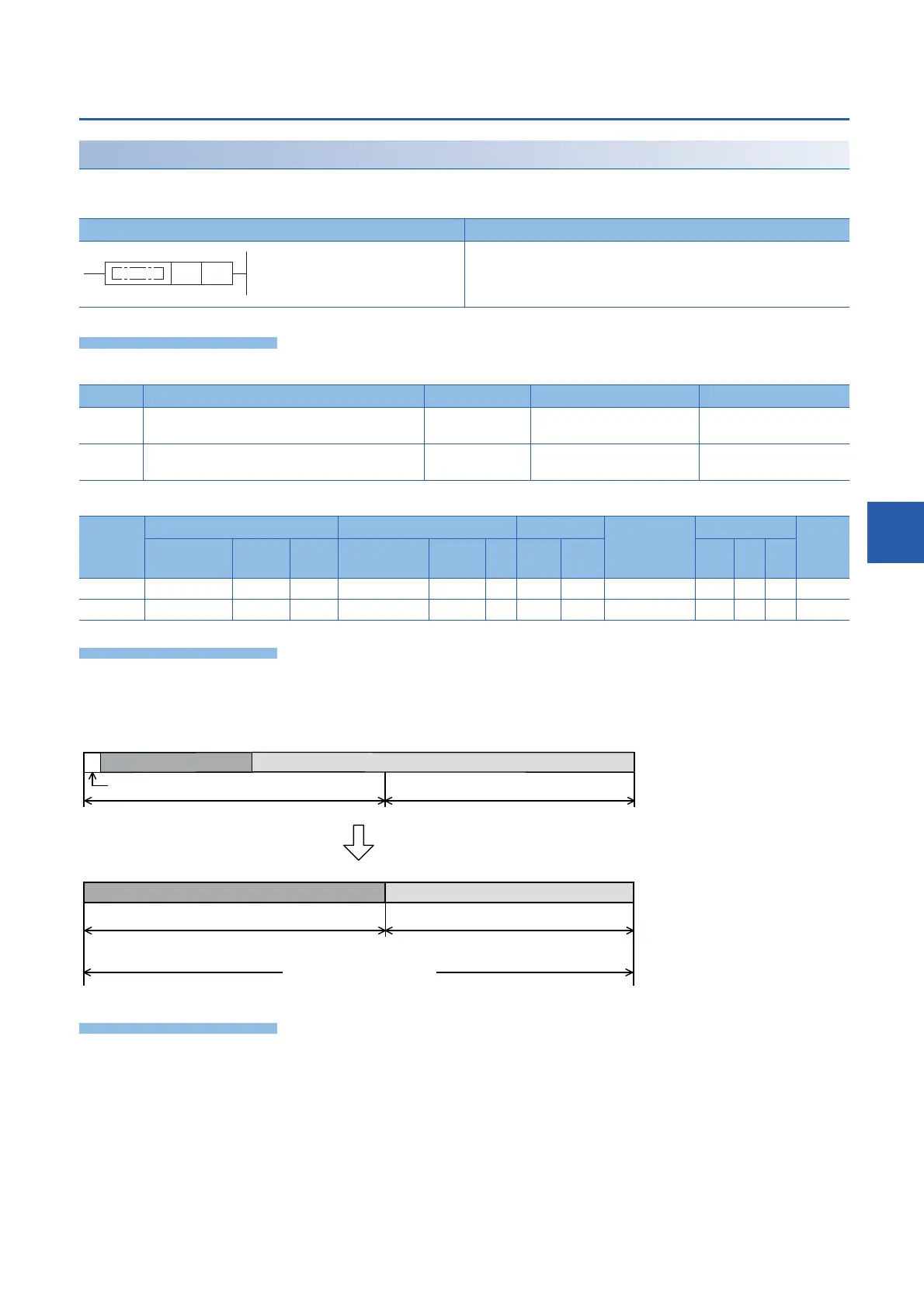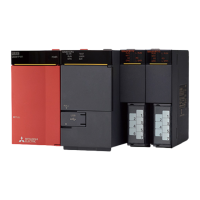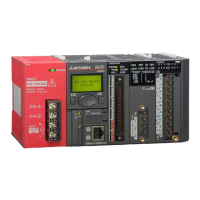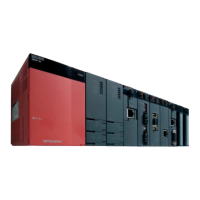7 APPLICATION INSTRUCTION
7.7 Real Number Instruction
433
7
Converting binary floating point to decimal floating point
DEBCD(P)
These instructions convert the binary floating point specified by (s) to decimal floating point, and store the converted data in
the device specified by (d).
■Descriptions, ranges, and data types
■Applicable devices
• These instructions convert the binary floating point specified by (s) to decimal floating point, and store the converted data in
the device specified by (d).
In floating point operations, all data is handled in binary floating point. Because binary floating point is difficult to understand
(requiring a dedicated monitoring method), it is converted into scientific notation (decimal floating point) so that monitoring can
be easily executed by peripheral equipment.
Ladder diagram Structured text
ENO:=DEBCD(EN,s,d);
ENO:= DEBCDP(EN,s,d);
Operand Description Range Data type Data type (label)
(s) Head device number storing binary floating point data Single-precision real number
(binary)
Single-precision real number
(binary)
(d) Device number storing converted decimal floating point Single-precision real number
(decimal)
Single-precision real number
(decimal)
Operand Bit Word Double word Indirect
specification
Constant Others
X, Y, M, L,
SM, F, B, SB
U\G T, ST,
C, LC
T, ST, C, D,
W, SD, SW, R
U\G Z LC LZ K, H E $
(s)
(d)
b31 b30 b29 b28 b27 b26 b25 b24 b23 b22 b21 b20 b19 b18 b17 b16 b15 b14 b13 b12 b11 b10 b9 b8 b7 b6 b5 b4 b3 b2 b1 b0
10
b31 b30 b29 b28 b27 b26 b25 b24 b23 b22 b21 b20 b19 b18 b17 b16 b15 b14 b13 b12 b11 b10 b9 b8 b7 b6 b5 b4 b3 b2 b1 b0
(s)+1 (s)
(d)+1 (d)
(d)
(d)+1
High order Low order
Mantissa part (23 bits)
Low order
High order
Mantissa partExponent part
Exponent part (8 bits)
Sign (1 bit)

